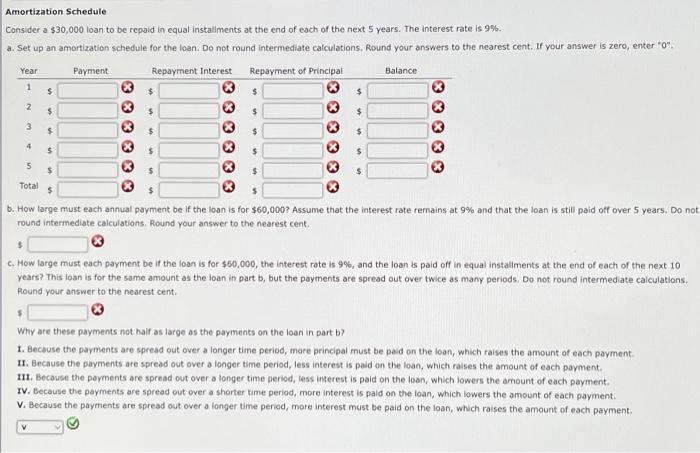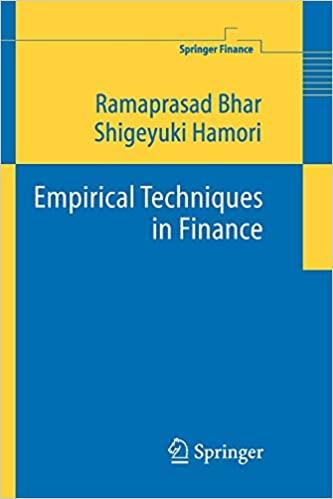Answered step by step
Verified Expert Solution
Question
1 Approved Answer
tAmortization Schedule Consider a $30,000 loan to be repaid in equal installments at the end of each of the next 5 years. The interest rate
tAmortization Schedule Consider a $30,000 loan to be repaid in equal installments at the end of each of the next 5 years. The interest rate is 9%. a. Set up an amortization schedule for the loan. Do not round intermediate calculations. Round your answers to the nearest cent. If your answer is zero, enter "0". Repayment Interest Year 1 2 3 4 $ 5 Total $ $ $ V $ $ Payment $ $ $ $ Repayment of Principal $ $ $ $ $ $ $ $ $ $ $ $ b. How large must each annual payment be if the loan is for $60,000? Assume that the interest rate remains at 9% and that the loan is still paid off over 5 years. Do not round intermediate calculations. Round your answer to the nearest cent. Balance ***** $ c. How large must each payment be if the loan is for $60,000, the interest rate is 9%, and the loan is paid off in equal installments at the end of each of the next 10 years? This loan is for the same amount as the loan in part b, but the payments are spread out over twice as many periods. Do not round intermediate calculations. Round your answer to the nearest cent. Why are these payments not half as large as the payments on the loan in part b? I. Because the payments are spread out over a longer time period, more principal must be paid on the loan, which raises the amount of each payment. II. Because the payments are spread out over a longer time period, less interest is paid on the loan, which raises the amount of each payment. III. Because the payments are spread out over a longer time period, less interest is paid on the loan, which lowers the amount of each payment. IV. Because the payments are spread out over a shorter time period, more interest is paid on the loan, which lowers the amount of each payment. V. Because the payments are spread out over a longer time period, more interest must be paid on the loan, which raises the amount of each payment.

Step by Step Solution
There are 3 Steps involved in it
Step: 1

Get Instant Access to Expert-Tailored Solutions
See step-by-step solutions with expert insights and AI powered tools for academic success
Step: 2

Step: 3

Ace Your Homework with AI
Get the answers you need in no time with our AI-driven, step-by-step assistance
Get Started


